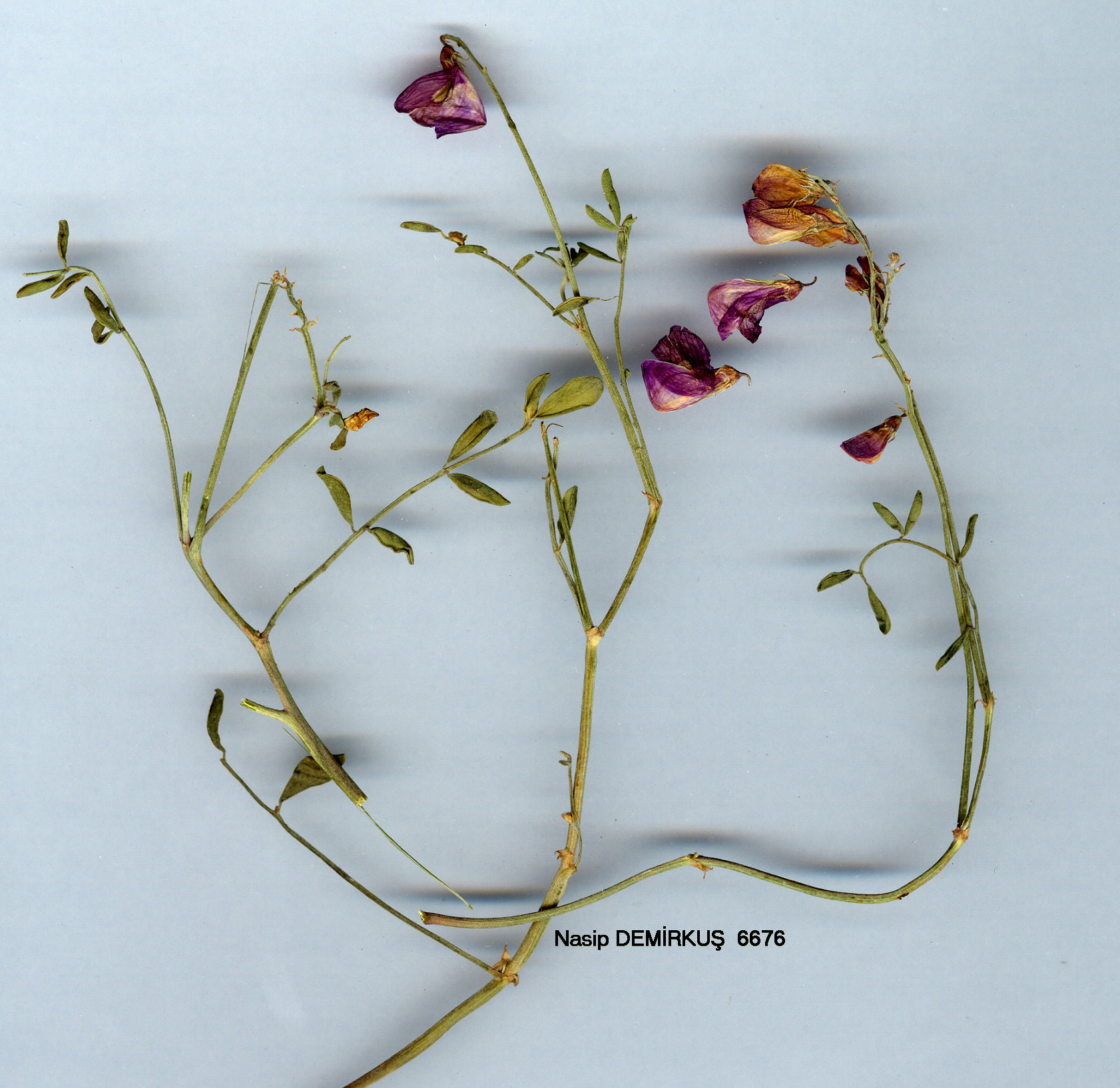| Fabaceae |
|---|

Hedysarum pestalozzae BOISS. |
 Hedysarum pestalozzae BOISS. |
Hedysarum L. |
| H. pestalozzae Boiss., Diagn. ser 1(9): 112 (1849). Syn: H. leucocladum Boiss., 1.c.! Stems procumbent or ascending, 12-30 cm, branched above. Leaves with 4-9 pairs of linear-elliptic to oblong-elliptic leaflets, (5-)7-14 x(l-)2-5-4 mm, ad-pressed pilose or subglabrous above, ± densely canescent below; stipules scari-ous, c. 2 mm. Peduncles longer than the leaves. Racemes ± lax, 6-20-flowered, elongating in fruit. Calyx 4-6 mm, with triangular teeth about the same length as the tube. Corolla purple, sometimes with traces of yellow; standard pilose or glabrous, 13-16(-19) mm; wings 12-16 mm; keel 12-15 mm. Ovary glabrous or pilose. Lomentum with 2-3 oblong-elliptic segments, ± densely tomentose,with or without short setae. Fl.5-7. Rocky, often calcareous, slopes, fallow fields in steppic vegetation, 900-1500 m. Type: [Turkey C2 Antalya] Lycia, Elmalu, 1846, Pestalozza (holo. G!). S., C. and N.E. Anatolia. A8 Gümüşane: Bayburt to Aşkale, 1900 m, Hub.-Mor. 13362! B5 Nevşehir: Mucur, D. 21825! Kayseri: Develi, 1320 m, Hub.-Mor. 11162! B6 Sivas: Sivas to Ulaş, 1540 m, Hub.-Mor. 13363! B7 Malatya: nr. Malatya, on road to Elaziğ, Alava 6836! C2 Burdur: Burdur to Tefenni, 990 m, Hub.-Mor. 8533! C3 Burdur: S. end of Burdur lake, Hub.-Mor. 5038! C4 Konya: Karaman to Mut, 1350 m, Hub.-Mor. 16960! Endemic; Ir.-Tur. element. Varying greatly in the density of the indumentum; the extremes are represented by the original collection of H. leucocladum with a dense sericeous indumentum and the type gathering of H. pestalozzae with a sparse indumentum. All transitions between them occur. Most of the representatives of this species have a clearly pilose standard but in the type it is glabrous. Although Boissier and Fedtschenko stressed this character in their generic accounts, it does not appear to be, with the material at hand, a sufficiently constant character to warrant specific separation of gatherings with pilose and glabrous standards but which otherwise are very similar. H. pestalozzae is closely related to H. varium, but differs in the smaller size of the plant, the smaller, morenumerous leaflets, the generally purple corollas and the tomentose lomentum. There are specimens which are somewhat intermediate between H. pestalozzae and H. varium (q.v.), such as those from the Giimüşane area. |